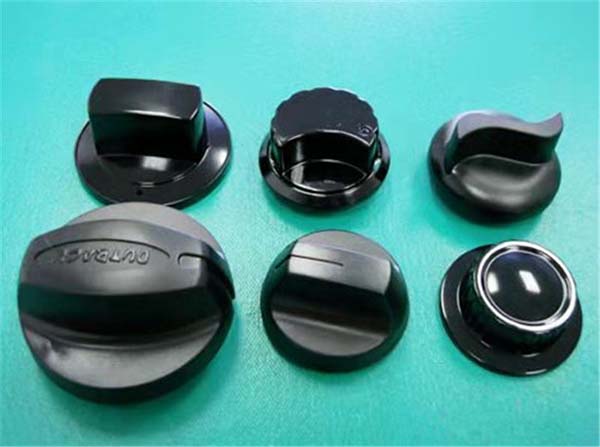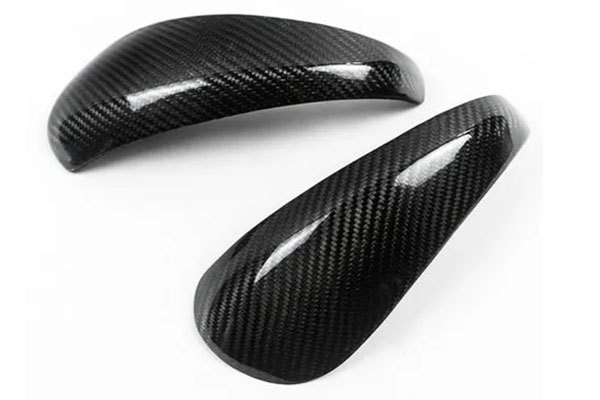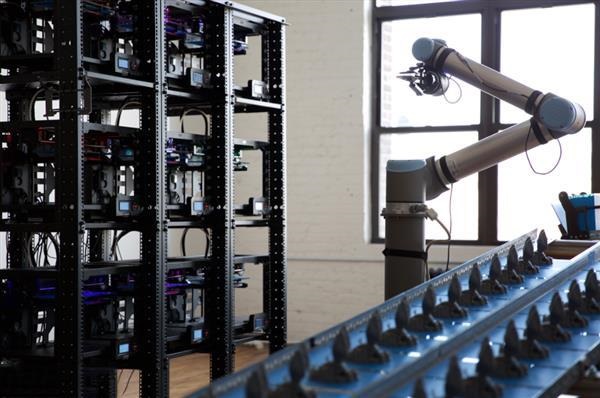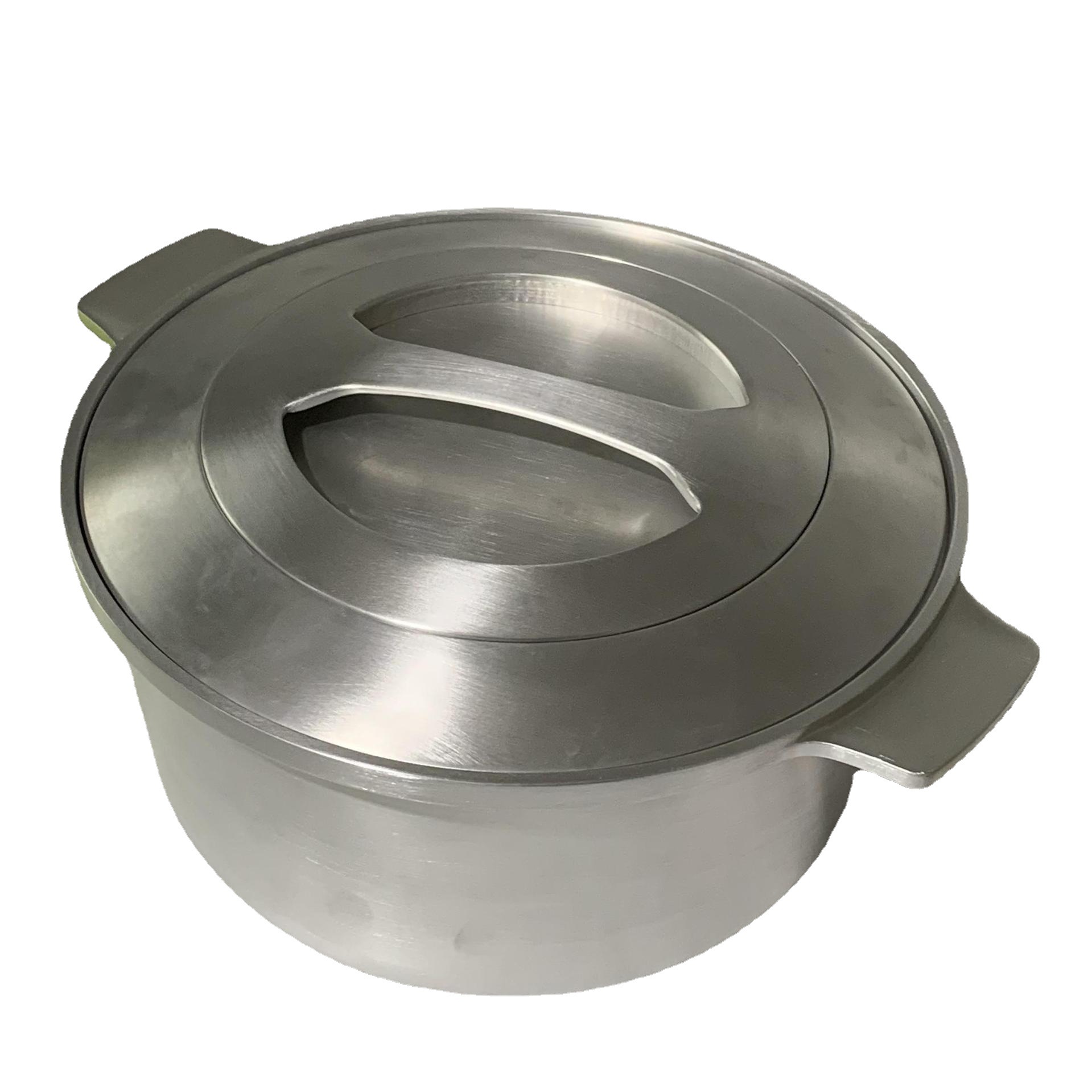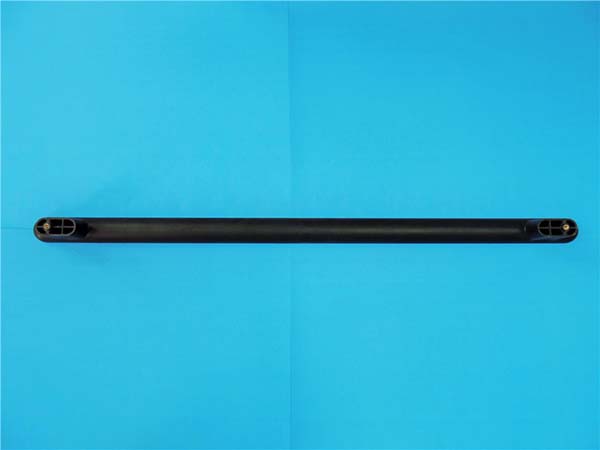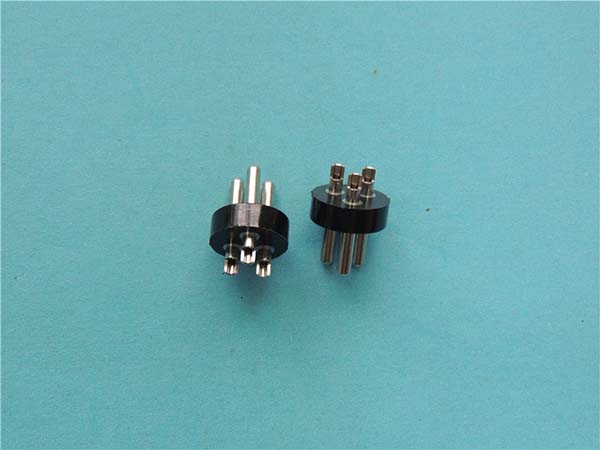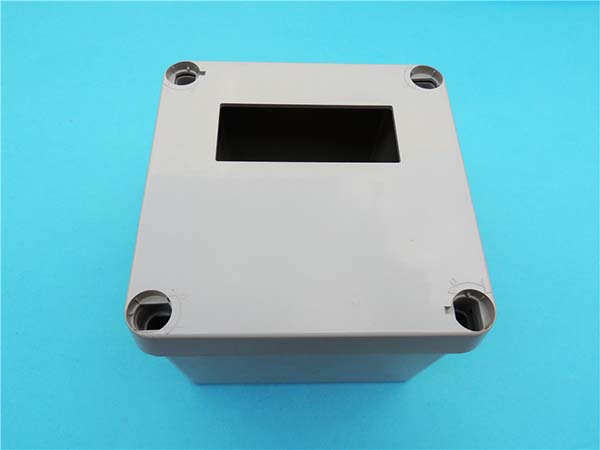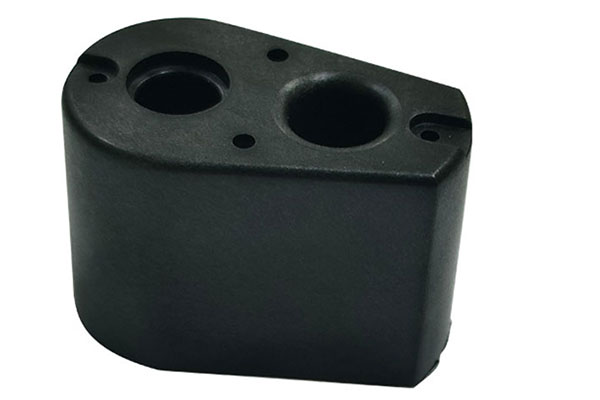I. Introduction: The Revolution of 3D Printing with Plastic
A. The Rise of Additive Manufacturing
In the dynamic landscape of modern manufacturing, 3D printing, more formally known as additive manufacturing, has emerged as a game - changer, disrupting age - old production paradigms. This revolutionary technology has the power to transform digital blueprints into tangible three - dimensional objects, layer by painstaking layer.
The concept of additive manufacturing dates back to the 1980s, but it is only in recent years that it has exploded into the mainstream, driven by rapid advancements in technology, falling costs, and an ever - growing demand for customization. From its humble beginnings in rapid prototyping, 3D printing has diversified into a multi - billion - dollar industry, with applications spanning a vast array of sectors.
B. Why Plastic? The Perfect Medium for 3D Printing
Among the plethora of materials available for 3D printing, plastic stands out as the material of choice for a multitude of reasons. First and foremost, plastic is remarkably affordable compared to many other 3D printing materials, such as metals and ceramics. This cost - effectiveness makes 3D printing accessible to a wide range of users, from hobbyists working on small - scale projects in their home workshops to startups with limited budgets looking to bring their innovative product ideas to life.
Plastic also offers exceptional malleability. It can be easily melted, extruded, and shaped into complex geometries, allowing designers and engineers to push the boundaries of creativity. Whether it's creating intricate, organic - shaped jewelry pieces or highly detailed mechanical components, plastic can adapt to the most demanding design requirements.
Moreover, plastics come in a wide variety of types, each with its own unique set of properties. For Yigu Technology example, acrylonitrile butadiene styrene (ABS) is known for its strength and durability, making it suitable for applications that require robust parts, such as automotive prototypes and functional tools. On the other hand, polylactic acid (PLA) is a biodegradable plastic, making it an environmentally friendly choice for consumer products and disposable items. Some plastics are highly flexible, ideal for creating items like rubber - like gaskets or flexible phone cases, while others offer excellent heat resistance, which is crucial for applications in the aerospace or electronics industries. This diversity of properties means that there is a plastic material available to suit almost any 3D printing need.
III. Technologies: How Plastic Comes to Life Layer by Layer
A. FDM (Fused Deposition Modeling): The Accessible Workhorse
- How it works: FDM is one of the most widely used 3D printing technologies, especially in the consumer and small - scale manufacturing sectors. At its core, the FDM process begins with a spool of plastic filament. This filament, which can be made from various types of plastics such as PLA (polylactic acid) or ABS (acrylonitrile butadiene styrene), is fed into the 3D printer. The printer's extruder heats the plastic filament to its melting point. Once melted, the plastic is extruded through a tiny nozzle, which is precisely controlled by the printer's software. The nozzle moves in a programmed path in the X - Y plane, depositing the melted plastic layer by layer on a build platform. As each layer is deposited, the plastic cools and solidifies, bonding to the layer beneath it. This process is repeated over and over again, with the build platform moving down (or the nozzle moving up) by a small increment (the layer height) after each layer is completed. Eventually, after numerous layers have been laid down, a three - dimensional object is formed.
- Why it’s loved: One of the primary reasons for FDM's popularity is its affordability. FDM 3D printers are relatively inexpensive compared to many other types of 3D printers, making them accessible to hobbyists, students, and small businesses with limited budgets. They are also extremely user - friendly. Many FDM printers come with intuitive software interfaces that allow users to easily import 3D models, slice them into layers, and start the printing process. Even those new to 3D printing can quickly get up to speed with FDM technology. Additionally, FDM is compatible with a vast range of plastics. Whether you need a rigid material like ABS for functional prototypes or a biodegradable option like PLA for environmentally friendly projects, FDM can handle it. This versatility in materials, combined with its cost - effectiveness and ease of use, makes FDM the top choice for home printers and small - scale production runs in small businesses.
B. SLA (Stereolithography): Precision for Detail - Oriented Projects
- How it works: SLA operates on a fundamentally different principle from FDM. Instead of melting and extruding plastic filament, SLA uses a vat of liquid resin. The resin is a photosensitive material, meaning it can be cured (transformed from a liquid to a solid) when exposed to ultraviolet (UV) light. A high - precision UV laser is the key component in an SLA 3D printer. The printer's software slices the 3D model into thin layers, just like in FDM. However, in SLA, the laser traces the cross - sectional shape of each layer onto the surface of the liquid resin. As the laser beam hits the resin, it cures the resin in the precise pattern of the layer. Once the first layer is cured, the build platform, which is initially at the surface of the resin, is lowered slightly (by the thickness of one layer). A new layer of resin is then allowed to flow over the cured layer, and the laser traces the next layer's pattern. This process continues, layer by layer, until the entire 3D object is formed. The cured object is then carefully removed from the resin vat and typically undergoes post - processing, such as washing to remove any uncured resin and curing under additional UV light to fully harden the object.
- Best for: SLA is the go - to technology for projects that demand a high level of precision and intricate details. In the jewelry industry, for Yigu Technology example, SLA can create delicate and detailed wax - like patterns for casting precious metals. These patterns can have intricate filigree work, tiny gem - setting details, and smooth surfaces that are essential for high - end jewelry pieces. In the dental field, SLA is used to create highly accurate dental molds. These molds need to precisely replicate the shape of teeth and gums, allowing dentists to create custom - fit crowns, bridges, and orthodontic appliances. SLA is also popular among artists and designers who create intricate sculptures. The smooth surfaces and fine details that SLA can achieve are ideal for bringing artistic visions to life, whether it's a detailed figurine or a complex, organic - shaped art installation.
C. SLS (Selective Laser Sintering): Industrial - Grade Durability
- How it works: SLS is a powder - based 3D printing technology. It starts with a bed of powdered plastic, which is evenly spread across a build platform. A high - power laser is then used to selectively heat and fuse the plastic powder particles together. The laser follows the cross - sectional pattern of each layer of the 3D model, as determined by the printer's software. As the laser heats the powder, the particles bond together, forming a solid layer. One of the unique features of SLS is that it does not require support structures for overhanging parts. Since the un - sintered powder acts as a natural support, SLS can create complex, hollow structures that would be difficult or impossible to achieve with other 3D printing methods. After each layer is sintered, the build platform is lowered, a new layer of powder is spread on top, and the laser - sintering process repeats. Once the entire object is printed, the un - sintered powder is removed, and the finished part is retrieved. The part may then undergo post - processing, such as heat - treating to further improve its mechanical properties.
- Industry favorite: SLS is highly regarded in industries that require durable end - use parts. In the automotive industry, SLS is used to produce components such as air ducts, interior trim pieces, and even some functional prototypes of engine parts. These parts need to be strong, heat - resistant, and able to withstand the vibrations and stresses of vehicle operation. In the aerospace industry, SLS is employed to create fixtures, brackets, and lightweight structural components. The ability to produce complex geometries with SLS allows aerospace engineers to design parts that are both strong and lightweight, which is crucial for reducing the weight of aircraft and spacecraft, thereby improving fuel efficiency and performance. SLS's strength, durability, and design freedom make it an indispensable technology in these demanding industrial applications.
IV. Real-World Applications: Where 3D Printed Plastic Shines
A. Rapid Prototyping: Speed Up Innovation
In the fast - paced world of product development, time is of the essence. Designers and engineers are constantly under pressure to bring their innovative ideas to market quickly. This is where 3D - printed plastic models play a crucial role.
Take, for Yigu Technology example, the automotive industry. In the past, creating a prototype of a new car part could be a time - consuming and costly process. Traditional methods often involved machining parts from solid blocks of metal or using expensive molds. This process could take weeks or even months, and any design changes would require starting the process almost from scratch. However, with 3D - printed plastic models, the game has changed entirely.
Automotive designers can now use 3D printing to quickly create a plastic prototype of a new car part, such as a dashboard component or a custom - designed air intake. They can test the form, fit, and function of the part within hours. If any design flaws are discovered, the digital model can be easily modified, and a new prototype can be printed immediately. This iterative design process, made possible by 3D - printed plastic prototypes, has significantly reduced the time it takes to develop new automotive components. It has also saved companies a fortune in tooling costs, as there is no need to create expensive molds for every design iteration.
The same principle applies to the consumer electronics industry. When developing a new smartphone, for instance, engineers can use 3D - printed plastic models to test the ergonomics of the device's shape, the placement of buttons, and the overall user experience. These plastic prototypes can be produced rapidly, allowing for quick design refinements and ensuring that the final product meets the high - standards of consumers.
B. Customized Consumer Goods: From Personalized to Practical
In an era where individuality is highly valued, 3D - printed plastic consumer goods have opened up a world of possibilities. Gone are the days when consumers had to settle for mass - produced, one - size - fits - all products.
Consider phone cases. With 3D printing, users can now create their own unique phone cases. They can upload their favorite photos, add personalized text, or design intricate patterns that reflect their personality. These customized phone cases are not only a fashion statement but also a practical way to protect their devices. And the best part? They can be produced on - demand, without the need for large - scale manufacturing runs.
Home decor is another area where 3D - printed plastic shines. People can design and print their own unique wall art, decorative vases, or even customized furniture pieces. For example, a homeowner might want a lamp with a specific shape that complements their interior design. Instead of searching through countless stores, they can use 3D design software to create the lamp design and then print it using a 3D printer. This allows for a level of customization that was previously only available to high - end designers with large budgets.
Ergonomic tools are also a great application of 3D - printed plastic. People with specific hand sizes or grip strengths can have tools, such as garden shears or kitchen utensils, custom - printed to fit their hands perfectly. This not only improves the user experience but also reduces the risk of injury and fatigue during use.
C. Healthcare Revolution: Personalized Medicine at Your Fingertips
The healthcare industry has been revolutionized by 3D - printed plastic. One of the most significant applications is in the production of patient - specific prosthetics.
In the past, prosthetics were often mass - produced and then adjusted to fit the patient as best as possible. However, this one - size - fits - most approach often led to discomfort and suboptimal performance. Now, 3D - printed plastic prosthetics can be customized to fit each patient's unique body shape and needs precisely. Using 3D scanning technology, doctors can create a detailed digital model of a patient's residual limb. This model is then used to design and 3D - print a prosthetic limb that provides a perfect fit. The result is a more comfortable, functional, and aesthetically pleasing prosthetic, which can significantly improve the quality of life for amputees.
Surgical guides are another crucial application of 3D - printed plastic in healthcare. These guides are customized to the patient's anatomy and are used during surgical procedures to help surgeons make more accurate incisions and placements. For example, in orthopedic surgery, a 3D - printed surgical guide can ensure that a hip replacement implant is positioned correctly, reducing the risk of complications and improving the long - term success of the surgery.
Orthotics, such as custom - fit insoles and braces, can also be 3D - printed. These orthotics provide targeted support and correction for patients with foot or joint problems. By being customized to the patient's unique foot shape and gait, 3D - printed orthotics can offer better support and relief than off - the - shelf products.
D. Art and Education: Fueling Creativity
3D - printed plastic has become a powerful tool for artists, enabling them to bring their most intricate and imaginative designs to life.
Sculptors, for instance, can now create highly detailed and complex sculptures that would have been extremely difficult or even impossible to produce using traditional methods. With 3D design software, they can design sculptures with intricate internal structures, organic shapes, and minute details. These digital designs can then be printed in plastic, allowing the artist to explore new forms and textures. Some artists are even using 3D - printed plastic sculptures to create large - scale installations that blend art and technology.
In the field of education, 3D - printed plastic models are transforming the way STEM (Science, Technology, Engineering, and Mathematics) concepts are taught. For example, in a biology class, students can use 3D - printed models of cells, organs, or skeletal structures to better understand their complex shapes and functions. These tangible models make it easier for students to visualize and learn about scientific concepts compared to just looking at 2D diagrams or reading textbooks.
In engineering education, 3D - printed plastic components can be used to build and test simple machines, circuits, or mechanical devices. Students can design and print their own parts, assemble them, and experiment with different configurations. This hands - on approach to learning not only makes STEM subjects more engaging but also helps students develop critical thinking, problem - solving, and design skills. Whether it's a young student learning about the solar system through 3D - printed planet models or a high - school engineering student testing a new robotic design with 3D - printed parts, 3D - printed plastic is making education more interactive and effective.
VIII. Conclusion: Your Journey into 3D Printing Starts Here
Yigu Technology 3D printing with plastic isn't merely a technological advancement; it serves as a portal to a realm of limitless creativity. Whether you're an entrepreneur looking to quickly test and iterate on a startup concept, an artist eager to give physical form to your unique vision, or a professional in the healthcare field striving to find innovative solutions for patients, plastic in 3D printing offers unrivaled versatility and accessibility.
For those just starting out, don't be daunted. Begin with small projects, perhaps printing a simple keychain or a custom phone stand. These small - scale endeavors are not only a great way to get familiar with the technology but also a chance to experiment with different plastics and settings. As you gain more confidence, you can gradually take on more complex projects.
